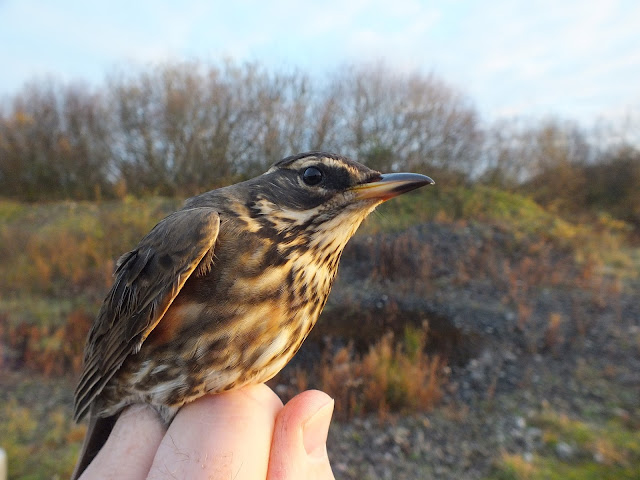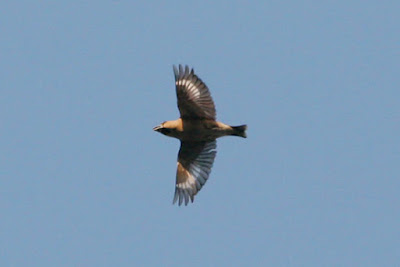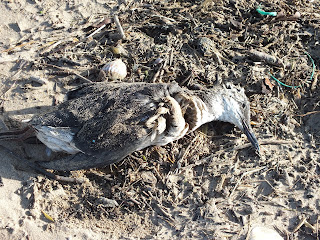The Lichen, Usnea articulate, the Sausage Beard-lichen declined sharply as a result of airbourne pollution, but is now making a bit of a comeback generally.
There is a very small example of it to be found in just one location (so far) at Morfa Berwig.
So called because of because of its straggly appearance and the "pinch points" along its "stem" which look like a string of sausages.
 |
| Sausage Beard-lichen |
It can occur in three main habitats, Hawthorns in windy location, the leeward side of windy Larch plantations or in the tops of Willows at wetland sites (Morfa Berwig), the degree of windiness is a key factor in its choice of habitat.
Other things hang or are put to hang in trees, I can never understand why though, there must be some sort of evolutionary process in place where plastic bags full of dog poo take off out of the hand of humans and fly to the nearest, usually inaccessible bush or tree.
 |
A bag of dog faeces,
in a bush over a ditch which means it will stay there
until it falls into the water!
|
I'm sure there's a reasonable explanation .....NOT!















